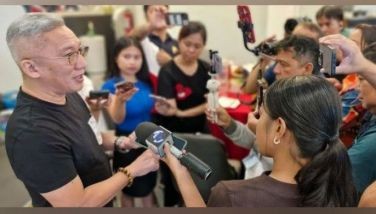Cebu's one-of-a-kind nursery: Trailblazing the Future of Multi-Species Mangrove Plantation Initiatives
CEBU, Philippines - Mangroves are one of the important ecosystems and also referred to as the “nurseries of the sea” owing to the fact that they serve as shelter, breeding and feeding grounds of marine fauna that include commercially important crustaceans and fishes.
Significantly, they protect coastal areas from erosion, storm surge, and tsunamis. Mangrove areas are also worthwhile sites for ecotourism and recreational activities, as well as for scientific and educational purposes. In the Philippines, mangroves are rich in species composition consisting of 47 “true mangrove” and “associated mangrove” species belonging to 26 families.
Perhaps, one might think that it’s impractical to raise mangrove propagules in the nursery given the fact that nature has since proven to handle its own course perfectly. But not nowadays. Anthropogenic activities unabatedly worsen the condition of the coastal ecosystem thus rendering natural regeneration of mangrove species difficult, if not impossible.
Establishment of mangrove plantations through direct planting of propagules, as commonly adopted by most mangrove rehabilitation projects, has become less successful. Few successful endeavors, however, are limited to the establishment of single species plantations which, like its upland counterparts, is less stable as an ecosystem per se.
The growing awareness on biodiversity conservation for this vulnerable ecosystem and the need for appropriate planting materials for various mangrove rehabilitation initiatives have encouraged the Ecosystems Research and Development Service (ERDS) of DENR- Region 7 to establish a mangrove nursery in 1999. Initially, the aim was to have a site for germination study for Tabau (Lumnitzera littorea) and other mangrove species with fine to small seeds and later for the establishment of mangrovetum in Barangay Taloot, Argao, Cebu (just beside the nursery).
This nursery for the “nursery of the sea” was established through the defunct Coastal Environment Program (CEP). But the management of the nursery was transferred to the Protected Area, Wildlife, and Coastal Zone Management Service (PAWCZMS) with the creation of the Coastal and Marine Management Division (CMMD) which absorbed the functions and activities of the CEP. But in 2004 the nursery management was turned over to CENRO Argao, the nearest DENR field office but with funding support coming from CMMD.
With an area of almost 1,000m2 (including the expansion), the nursery can accommodate up to 25,000.00 potted mangrove propagules. Unsterilized ordinary garden soil is used as potting medium. Watering using tap water and brackish water is done alternately, twice daily during dry season and once or every other day during wet season. Local materials such as palm leaves (coconut, sago, or nipa) are used to provide shade. But it was observed that too much shade results to higher mortality of potted propagules not primarily due to lack of sunlight but because cool and shaded areas attract the habitation of small crabs which infest the succulent stems of the newly grown mangroves. Currently, natural shading is adopted by planting Talisay (Terminalia cattapa) inside the nursery.
Presently, a total of 18 true mangroves and associated species are propagated in the nursery. These include: the bakauan species (bangkau, lalake, and babae), bungalon, tawalis, tabigi, api-api, bantigi, langarai, busain, kulasi, pototan, pagatpat, tangal, malatangal, saging-saging, dungonlate, and magtalisay.
The three (3) species of bakauan (Rhizophora sp.) top in terms of quantity being raised due to the fact that most of the coastal areas available for mangrove planting activities nowadays are concentrated along the seaward zone. Usually, middle and landward zones are already occupied, if not, used or converted to support varied economic activities.
This one-of-a-kind nursery has already served various mangrove planting initiatives of some Cebu LGUs. A number of local academic institutions also have their Forestry and Biology students avail of the nursery’s facilities for their hands-on practice or field researches.
The ERDS 7 meanwhile, is currently implementing seed germination and asexual propagation studies on some mangrove species such as bantigi (Pemphis acidula) and pagatpat (Sonneratia alba). Studies for other species may follow soon.
Together with the nursery’s establishment, it is hoped that propagation of indigenous mangrove species will be ensured, not only for the benefit of our future generations, but also for the multitude of marine organisms that depend on them. (THE FREEMAN)
- Latest
- Trending























